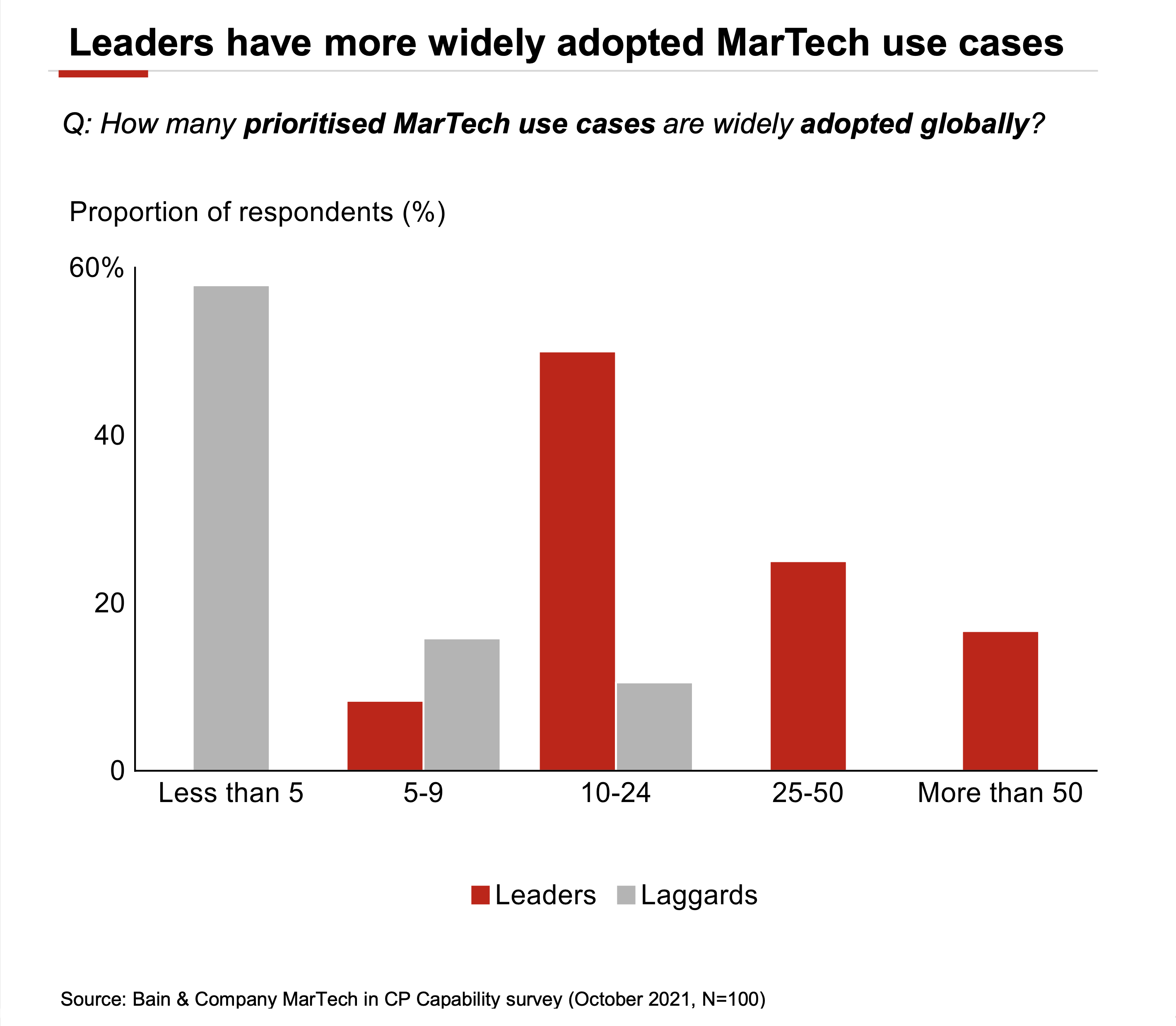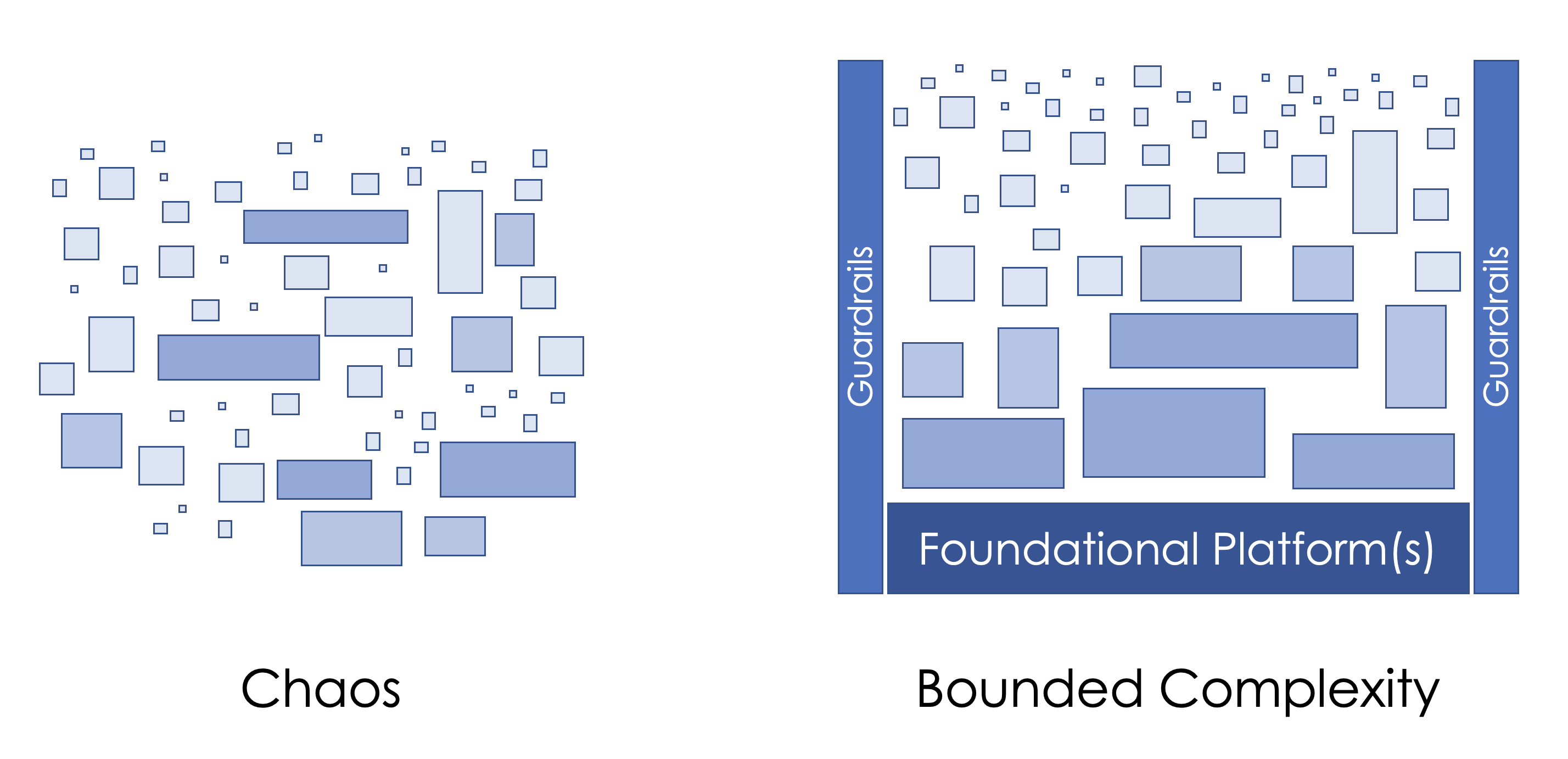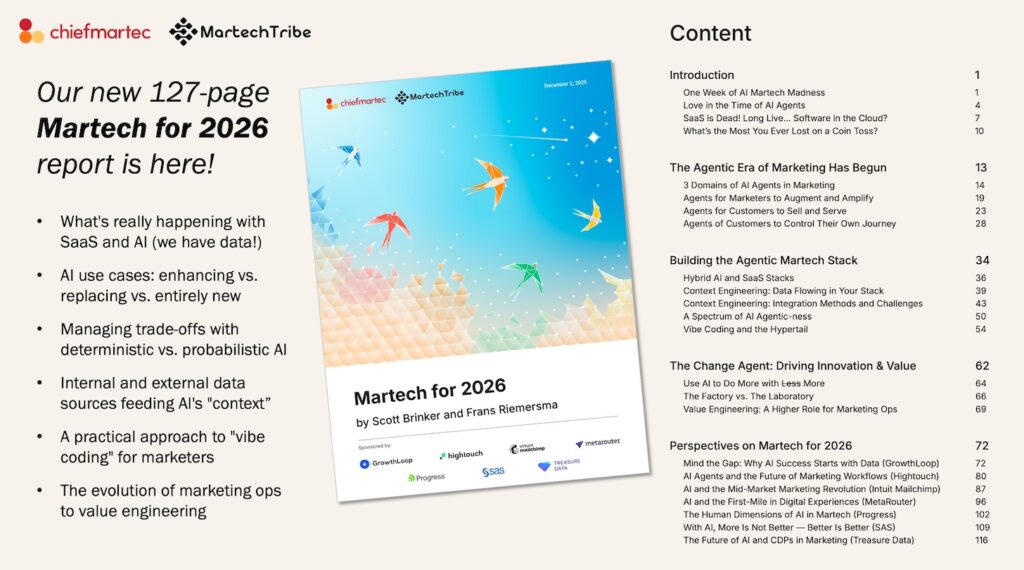
Bain & Company recently conducted a martech survey with 100 major consumer products companies. They evaluated these companies’ maturity on 30 different martech capabilities, including enablers such as martech product management and governance practices.
They identified the top 12% of those companies as “leaders” in their martech capabilities and the bottom 19% as “laggards.” You will hopefully not be surprised to learn that the leaders have mostly gained market share in the past couple of years, while the laggards have mostly lost market share.
Better martech capabilities are strongly correlated with better market performance.
But the difference between leaders and laggards that I found most noteworthy was the chart above — the huge spread between leaders and laggards in the number of prioritized martech use cases that are widely adopted globally.
A use case is a specific customer experience, with certain functionality, delivered through a particular channel. For example, A/B testing offers through an email campaign.
The majority of laggards have fewer than five martech use cases widely adopted.
In dramatic contrast, the leaders have dozens of widely adopted martech use cases. In fact, 1 in 6 of them have more than 50 use cases (!!). Better capabilities, more use cases, better market performance.
There are a couple of important points embedded in that statistic.
First, “widely adopted” is the crucial adjective. Anyone can buy martech products that, at least technically, enable a range of use cases. But that is theoretical potential. To unlock the real value of martech, you need to invest significantly in enablement: training on how to use the tools, education on how to produce great marketing with those tools, clearing the runway of organizational hurdles that would prevent or slow down such use cases, and encouragement and incentives to lean into experimenting with these new capabilities.
Doing that at scale throughout your organization makes you a leader.

The second point is that by enabling orders of magnitude more martech-powered use cases, leaders aren’t shying away from “complexity” — they’re embracing it. But it’s a bounded complexity that’s actually a source of power, not an operational hinderance.
The world of marketing is inherently complex today. So many different moving parts. So many changes continuously happening in the global environment, the competitive landscape, consumer technology, and — most importantly — customer behaviors. If you close your eyes, cover your ears, and chant loudly to try to drown it out, the complexity doesn’t go away. It just works against you.
You need to be able to continually adopt new use cases, quickly, to be a leader.
However, just letting martech run wild across your organization isn’t a solution either.
Complexity quickly turns to chaos when you have a stack of unintegrated, mismatched tools, without much shared infrastructure across them. Any tiny little pocket of marketing activity might be able move fast (and break things) by doing their own thing in isolation. But the moment you want to do anything that requires connectivity across that disjointed stack, everything grinds to a halt.
All the big ideas for customer experience today require that connectivity.
Instead, we see martech leaders enable bounded complexity by platforming marketing — establishing a strong, shared foundation that all other tools in the stack must integrate with and establishing clear, solid guardrails for all the use cases that get created within that environment.
Vertical and horizontal aggregation platforms, which I’ve been writing a lot about lately, provide the technical capability to build such a simultaneously open and well-structured architecture.
This creates a kind of antifragile martech environment that grows stronger with change. You can have a very large number of use cases, which can be continually added to our adapted to new circumstances, that nonetheless align to common principles of data, workflow, user experience. This lets you move fast and not break things.
Bounded complexity gives you a healthy platform ecosystem inside your organization.


